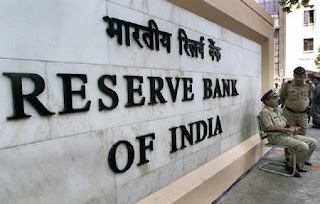
 Reserve Bank of India has released its third quarterly review of the monetary policy on January 29, 2010. The second quarterly review was released on October 27, 2009. This policy gives indication of RBI 's basic instance from managing the crisis for last two years to managing the recovery at this time as the not only the Global but also Indian Economy shows signs of recovery. The latest projections of the global economy are showing increasing signs of stabilisation with the Asian region experiencing a relatively stronger rebound. Global economic performance improved during the third and fourth quarters of 2009. This eventually promted the IMF to reduce the projected rate of economic contraction in 2009 from 1.1 per cent made in October 2009 to 0.8 per cent in January 2010. The IMF has also revised the projection of global growth for 2010 to 3.9 per cent, up from 3.1 per cent.
Reserve Bank of India has released its third quarterly review of the monetary policy on January 29, 2010. The second quarterly review was released on October 27, 2009. This policy gives indication of RBI 's basic instance from managing the crisis for last two years to managing the recovery at this time as the not only the Global but also Indian Economy shows signs of recovery. The latest projections of the global economy are showing increasing signs of stabilisation with the Asian region experiencing a relatively stronger rebound. Global economic performance improved during the third and fourth quarters of 2009. This eventually promted the IMF to reduce the projected rate of economic contraction in 2009 from 1.1 per cent made in October 2009 to 0.8 per cent in January 2010. The IMF has also revised the projection of global growth for 2010 to 3.9 per cent, up from 3.1 per cent. Objectives:
RBI wishes to monitor the liquidity situation and manage it actively liquidity to ensure that credit demands of productive sectors are adequately met consistent with price stability.
To maintain an interest rate environment consistent with price stability and financial stability, and in support of the growth process.
Key Rates:
In this monetary policy review RBI has kept the key rates Bank rate, Repo Rate and Reverse Repo Rate unchanged.
The Bank rate is retained at 6%, Repo rate unchanged at 4.75%, Reverse repo rate to remain at 3.25%.
The cash reserve ratio (CRR) of scheduled banks has been increased by 75 basis points in two stages from 5.0 per cent to 5.75 per cent of their net demand and time liabilities (NDTL). As a result of the CRR increase, about Rs.36,000 crore of excess liquidity will be absorbed from the system.
Key Projections:
Financial Year 2010 banks deposit growth projection has been kept at 17%
Financial Year 2010 money supply growth was cut to 16.5%.
Financial Year 2010 Agricultural GDP Growth = near zero
GDP growth projection raised to 7.5%
WPI inflation projection raised to 8.5%
Expected Outcomes:
On Liquidity:The increased CRR will suck out the excess liquidity of Rs. 36000 Crore from the markets.
On Inflation:
The increasing CRR rate will help to anchor inflationary expectations. This step taken by the RBI comes followed by the spiraling inflation.
On Recovery:
The basic mood of the RBI shifts from managing the crisis to managing the recovery. with this RBI rolls back the initiatives taken to boost liquidity in the economy to sustain in the ongoing global financial downturn. The policy instrument gves a clear indication that recovery process will be supported without compromising price stability.
Some other points:
On Liquidity:The increased CRR will suck out the excess liquidity of Rs. 36000 Crore from the markets.
On Inflation:
The increasing CRR rate will help to anchor inflationary expectations. This step taken by the RBI comes followed by the spiraling inflation.
On Recovery:
The basic mood of the RBI shifts from managing the crisis to managing the recovery. with this RBI rolls back the initiatives taken to boost liquidity in the economy to sustain in the ongoing global financial downturn. The policy instrument gves a clear indication that recovery process will be supported without compromising price stability.
Some other points:
Over 98% of Central Govt's net market borrowing already complete
Crude oil prices may increase sharply
High food prices will continue to intensify inflationary pressures
Real estate prices firm up in line with trend in several other EMs
Large fiscal deficit poses risk to economic prospects
RBI wants Govt to return to path of fiscal consolidation
RBI awaiting the Govt's decision on phasing out transitory components of fiscal stimulus
Govt's fiscal stimulus in H2 of FY09 has contributed significantly to the recovery
India's improving growth prospects and high global liquidity may result in significant increase in net inflows
Recovery in India is yet to fully take hold
Exports start responding to revival in global demand
Exports expand in Nov. 2009 after contracting for 13 months
The positive trend is expected to persist
Non-food bank credit growth decelerates from peak of over 29% in Oct 2008 to a little over 10% in Oct 2009
Non-bank sources of finance mitigate impact of slowdown in bank credit growth
Liquidity conditions remain comfortable
RBI absorbing about Rs.1,09,000 crore on a daily average basis in FY10
India is facing rising inflationary pressures, albeit largely due to supply side factors
RBI says there is a need to encourage domestic consumption and investment demand in India
Since the Indian economy is supply-constrained, pick-up in demand could exacerbate inflationary pressures
The Indian economy is steadily gaining momentum
Growth forecasts for 2009-10 have generally been revised upwards
The recovery is still unbalanced and yet to become sufficiently broad-based
Sustained increase in food prices is beginning to spill over into other commodities and services too
Capacity constraints could potentially reinforce supply-side inflationary pressures
Global prices of sugar, cereals and edible oils are appreciably higher than domestic rates
Global economy is showing increasing signs of stabilisation
There is still uncertainty about pace and shape of global recovery
Asian region experiencing a relatively stronger rebound
IMF revises projection of global growth for 2010 to 3.9%, up from 3.1%
Growth of emerging and developing economies is projected at 6%, up from 5.1% earlier
IMF sees slack in resource utilisation will contain global inflationary pressures
RBI sees some signs of asset price inflation globally along with rise in commodity prices
Emerging Markets (EMs) likely to face increased inflationary pressures due to easy liquidity conditions.Source:Finance Ministry Quarter Review,Gk Daily


0 comments on "Review of Third Quarter:Monetary Policy 2009-10"
Subscribe in a Reader
Post a Comment